How to Choose the Right Bathroom Sink
http://decor-ideas.org 05/14/2015 01:13 Decor Ideas
“Eight,” I hear you say. “She can’t possibly be serious. Isn’t a sink just a sink?” But yes, I am serious — and my clients are often baffled when trying to choose from the available options. The truth is that choosing one can be a bit overwhelming, but only when you’re not sure what you’re looking for. First, you need to consider which room you are shopping for (master en suite, family bathroom, powder room), who will use the room and how much space you have.
So before you head off to choose your new bathroom sink, grab a coffee, have a read and then go out armed with the information you need to help narrow down the best options for you and your space.
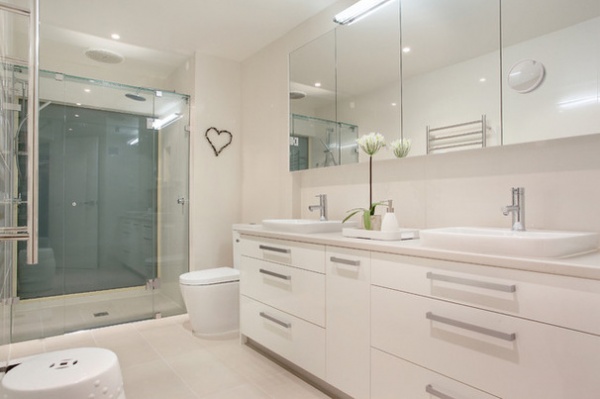
1. Top-mount sink. Probably the most commonly used sink, a top-mount, or drop-in, sink is designed to sit on top of the counter, as the name suggests.
Generally speaking, most of the sink sits below the counter, with just the rim of it sitting on top of, and visible above, the counter. The rim can be either very slim or a bit chunkier, like the one pictured, depending on the style you choose.
Pros: Top-mount sinks are suitable for pretty much any countertop material, including wood and laminate, as the cutout is completely covered by the sink and therefore doesn’t risk being damaged by water. They are also less costly to install in a stone countertop, because they don’t require laborious polishing of the cutout edges, as with an undermount sink.
Con: You can’t wipe water and spills straight from the counter into the sink.
Good for: Elegant en suites and minimalist schemes.
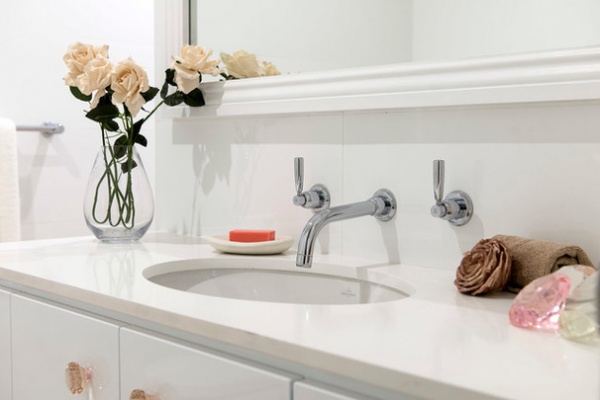
2. Undermount sink. This sits underneath the counter. The rim of the sink is fixed to the underside of the countertop, as opposed to sitting on top of it.
Pros: This creates a seamless, clean look, as less of the actual sink is visible. Another advantage is that water and spills can be wiped directly from the countertop into the sink without any obstruction, making it a great, easy-to-clean option for family bathrooms.
Cons: Undermounting a sink will usually only be possible with a solid-surface countertop, such as stone, and isn’t suitable with a laminate, as it can’t be sealed as well against moisture. These sinks also tend to cost more than top-mount ones.
Good for: Busy family bathrooms.
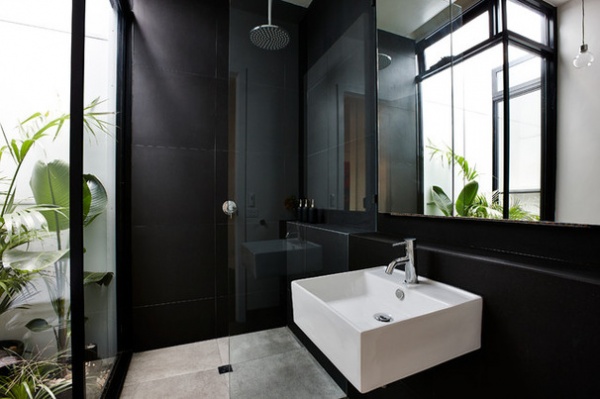
3. Wall-mounted sink. This is fixed directly to the wall without needing to sit in or on a countertop. It looks streamlined and gives a minimalist feeling to a room.
Pros: A wall-mounted sink doesn’t have any cabinets below it, which saves on space and also leaves more visible floor area, making the room feel bigger. For a wall-mounted sink to work in your space, all the plumbing, including the waste, must be positioned inside the wall to have a clean look.
Cons: There is no storage space, and there is a lack of “landing” space due to the absence of a countertop. Consider your need for storage in your bathroom before opting for a wall-mounted sink and maybe reserve it for the powder room, where storage isn’t as important.
Good for: Small spaces.
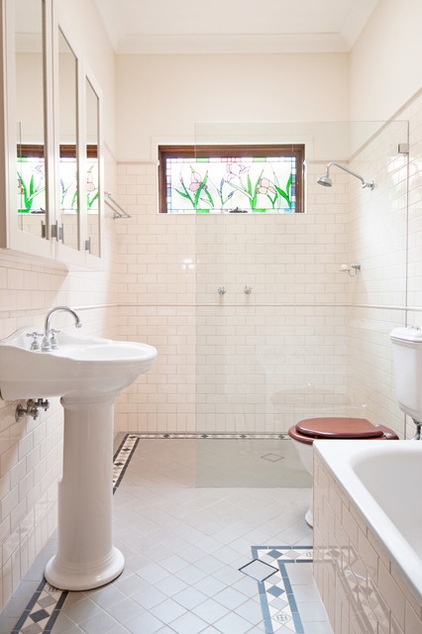
4. Pedestal sink. If your preference is a simple wall-mounted sink, but your waste pipe has to go through the floor and can’t be changed, then a pedestal sink is a great option.
Pros: The pedestal under the sink sits between the underside of the sink and the floor, concealing any pipework in between. A pedestal sink is also aesthetically pleasing and perfect if you want to give your bathroom a classical vibe.
Cons: Again, consider the fact that you won’t have any storage space under the sink or any counter space around it. This option can also be a bit tricky to clean around, as there is usually a gap between the wall and the back of the pedestal (as pictured here).
Good for: Period properties and traditional schemes.
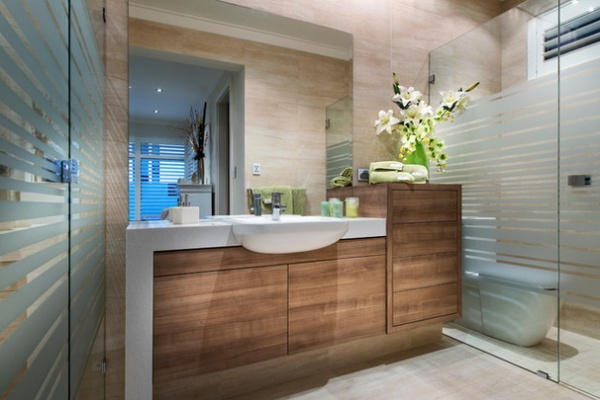
5. Semirecessed sink. If your bathroom or en suite has limited space, but you would still like some vanity cabinets below your sink for storage, then a semirecessed option might be the solution you need.
Pros: A semirecessed sink sits proudly at the front of cabinets and the countertop that it sits on, allowing you to have much shallower cabinets — maybe even as shallow as about 12 inches (300 millimeters), depending on the model you choose. This frees up valuable floor space. It also keeps a lot of the counter space free for cosmetics and other products. Much like a pedestal sink, this is a good option for young children and people with limited mobility, as you can get closer to the sink to reach the faucet without the obstruction of a countertop and cabinets.
Cons: The storage space underneath is limited. Also, because there isn’t any countertop around the front of the sink to catch water, splashes and spills onto the floor are more common, especially in a home with children.
Good for: Mini-me’s and beauty queens.
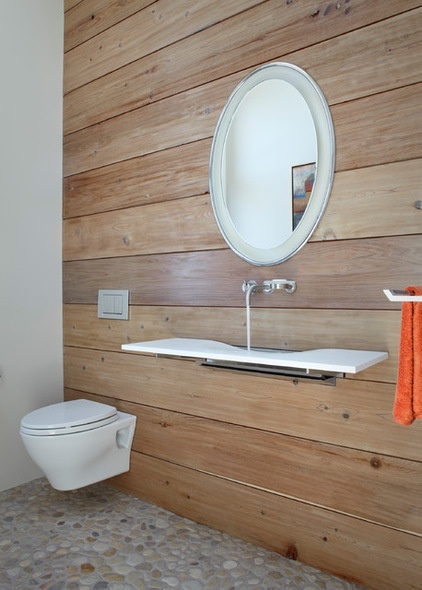
6. Washplane sink. Washplane sinks, often spotted in sleek hotels and restaurant bathrooms, are the simplest of the options. They’re slim, streamlined and stylish.
Pros: Washplane sinks take up very little space, so they are great in a room where space is limited, such as in a powder room. You can buy one made of ceramic, porcelain or glass off the shelf. Alternatively, a stonemason can make them in this style from granite, marble or engineered stone. They simply mount a small stainless steel trough under the sink to catch the water before it runs into the waste pipe in the wall behind.
Cons: Washplane sinks are best suited to the powder room, where the sink will be used just for hand washing. They don’t come with the option of having a plug, plus they are extremely shallow, so they’re not designed to hold water.
Good for: Powder rooms.
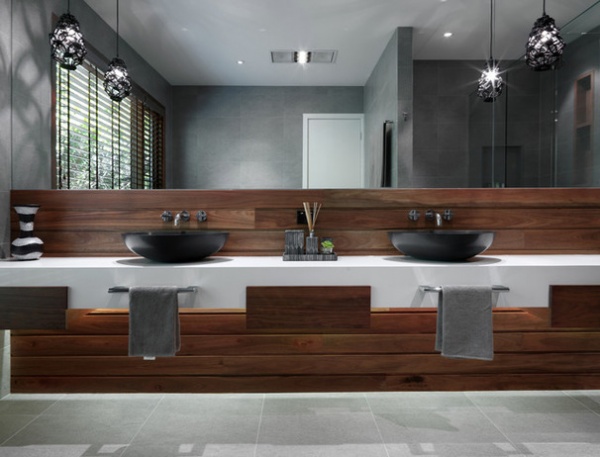
7. Vessel sink. A vessel sink is one that generally sits completely on top of the countertop, although there are some models that sit partially below the counter.
Pros: Unlike most other sinks that are exposed above the counter a little or not at all, vessel sinks demand attention and are a great way to create a statement in your bathroom. As the name suggests, a vessel sink is basically like a large bowl, so it is a great choice if you like a deep sink that can hold plenty of water.
Cons: Due to the height of vessel sinks and the way they sit above the counter, careful planning of the counter height, and of the height of the cabinets below, is required to ensure that the sink doesn’t end up being too high and uncomfortable to use — this often leads to less storage space under the counter. Cleaning around the base and back of the sink can also be a bit tricky.
Good for: En suite bathrooms.
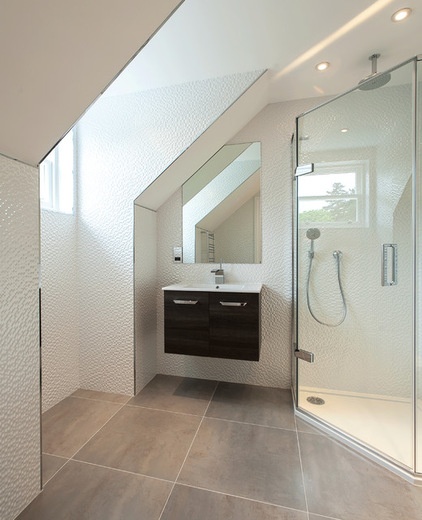
8. All-in-one sink and countertop. Many off-the-shelf vanity cabinets that can be purchased from bathroom supply stores offer an all-in-one countertop with a sink that sits on top. With this style, the sink itself is actually molded as part of the countertop. It can be made from various materials, such as porcelain or acrylic.
Pros: The main advantage is that it’s so easy to clean. There are no ridges or seams, so it’s very streamlined and a great choice for busy family bathrooms. These sinks are generally available in set standard sizes; however, some suppliers may offer the option to have one custom made to the size that suits your space best.
Con: These all-in-one tops are usually designed so the countertop gradually slopes down and inward to create a sink in the middle. This can lead to having less flat counter space to put things on than what you would have had if you had opted for a top-mount sink sitting on top of a countertop, for example.
Good for: Time-poor renovators, and those who need to buy something straight off the shelf and don’t have time to wait for a custom-made sink.
Tell us: What sink did you choose for your bathroom?
More:
Bathroom Design: How to Pick Out a Vanity
Key Measurements to Make the Most of Your Bathroom
Related Articles Recommended












